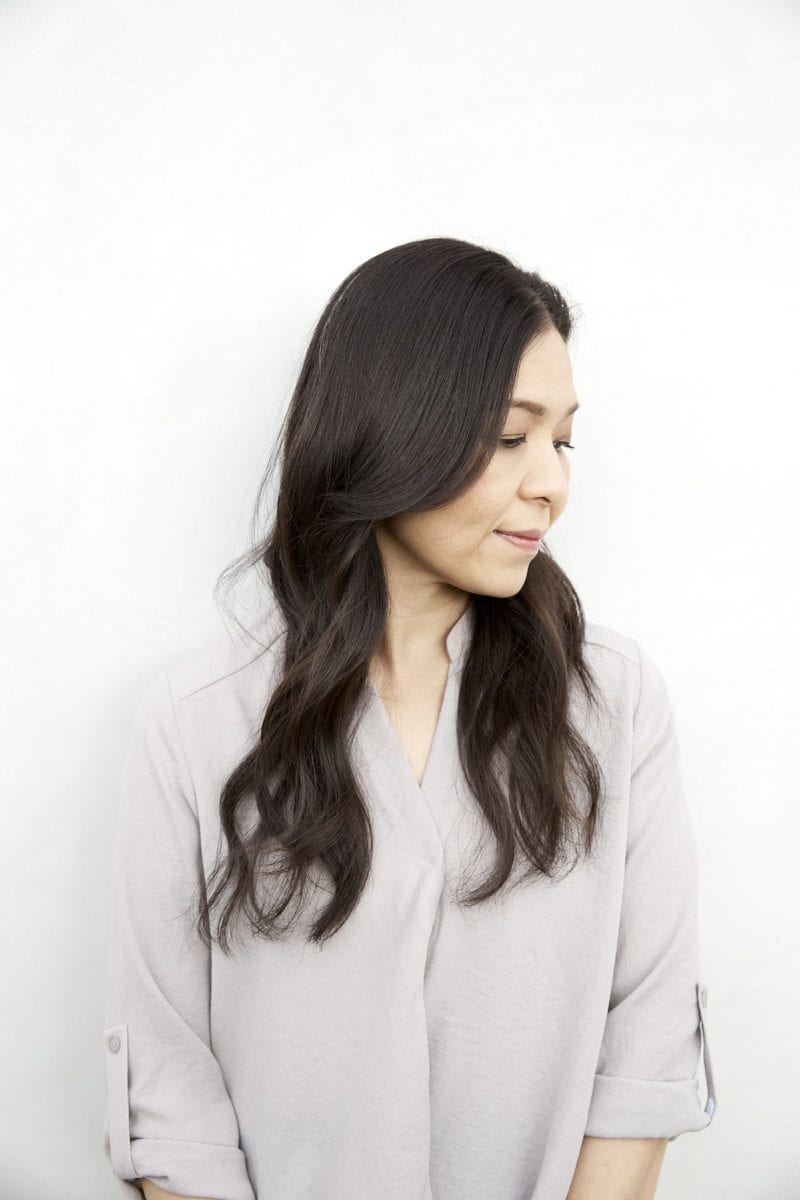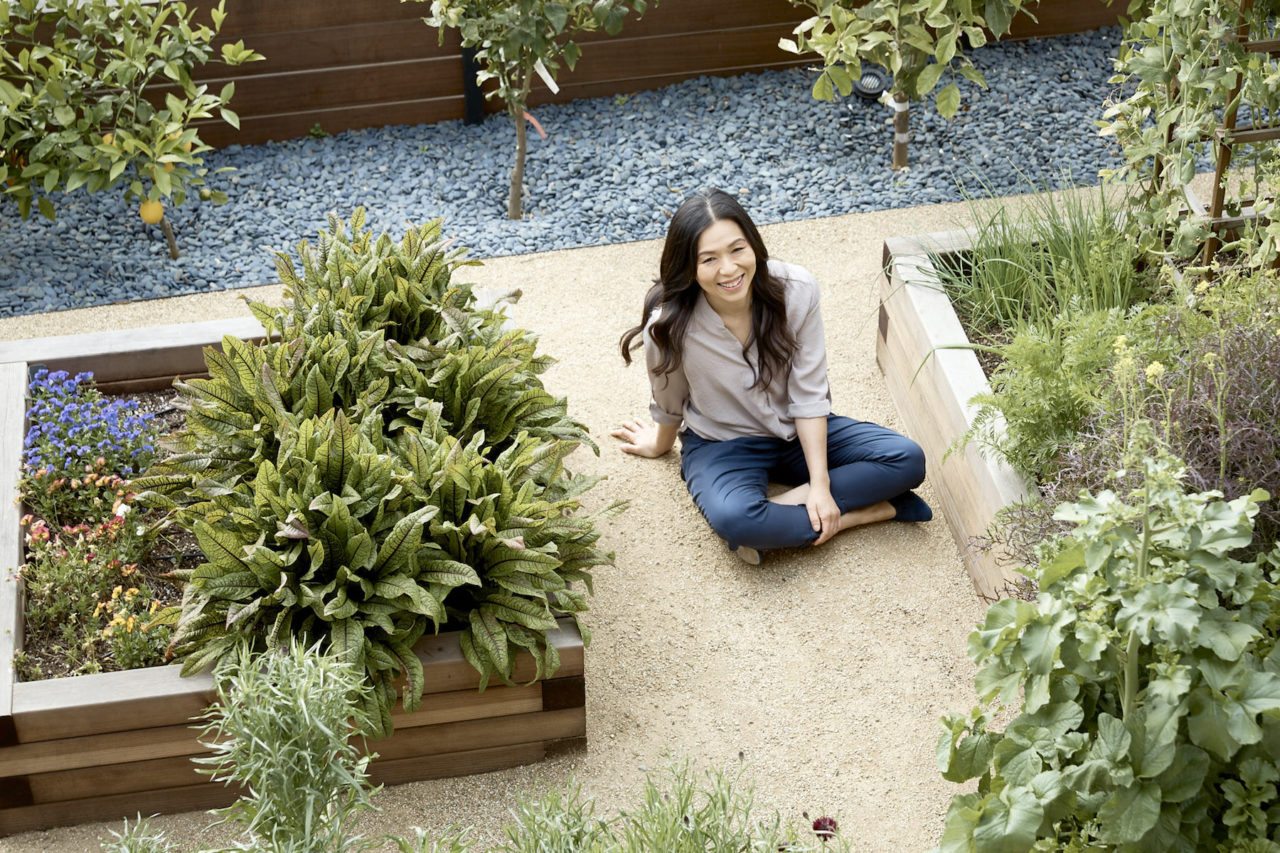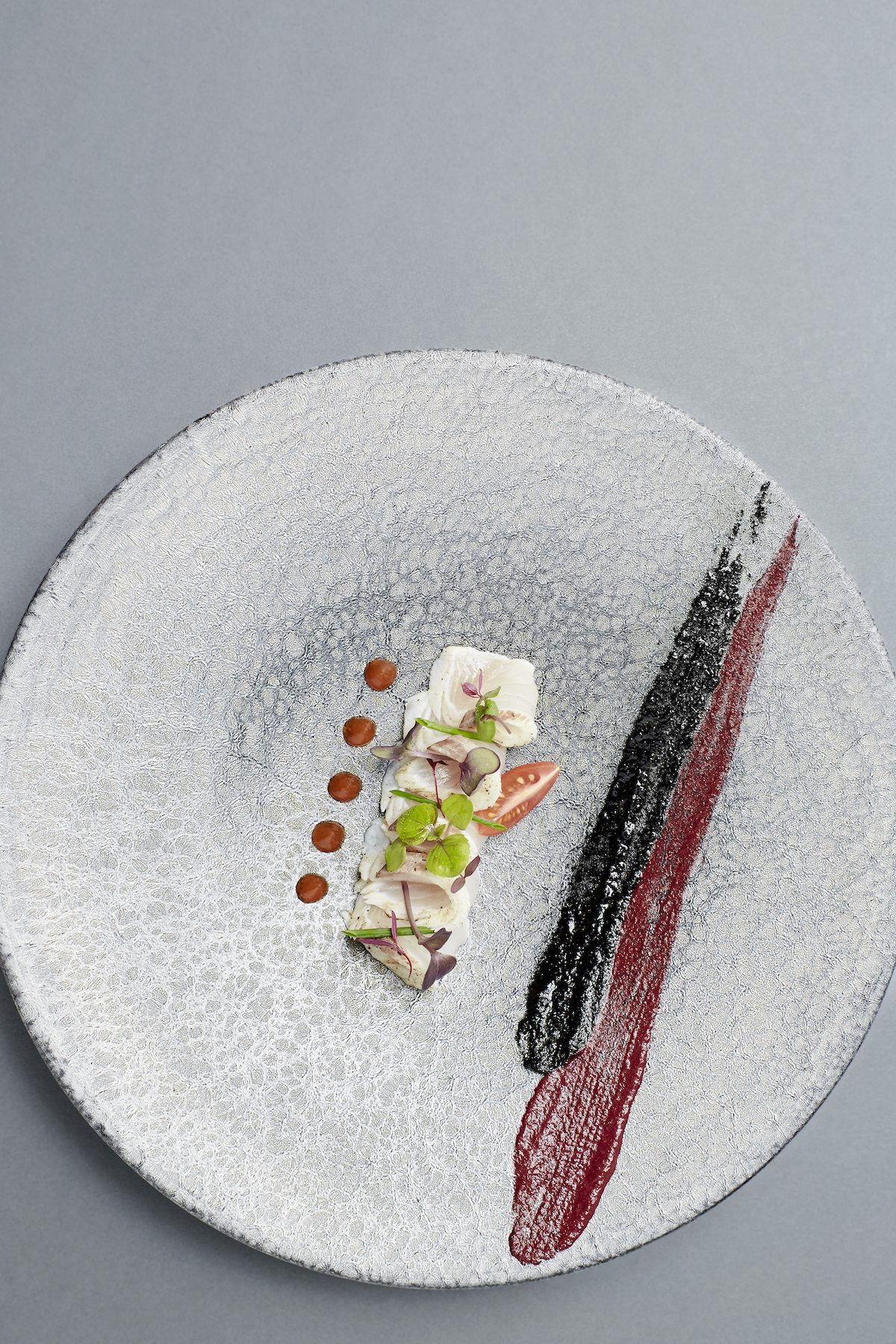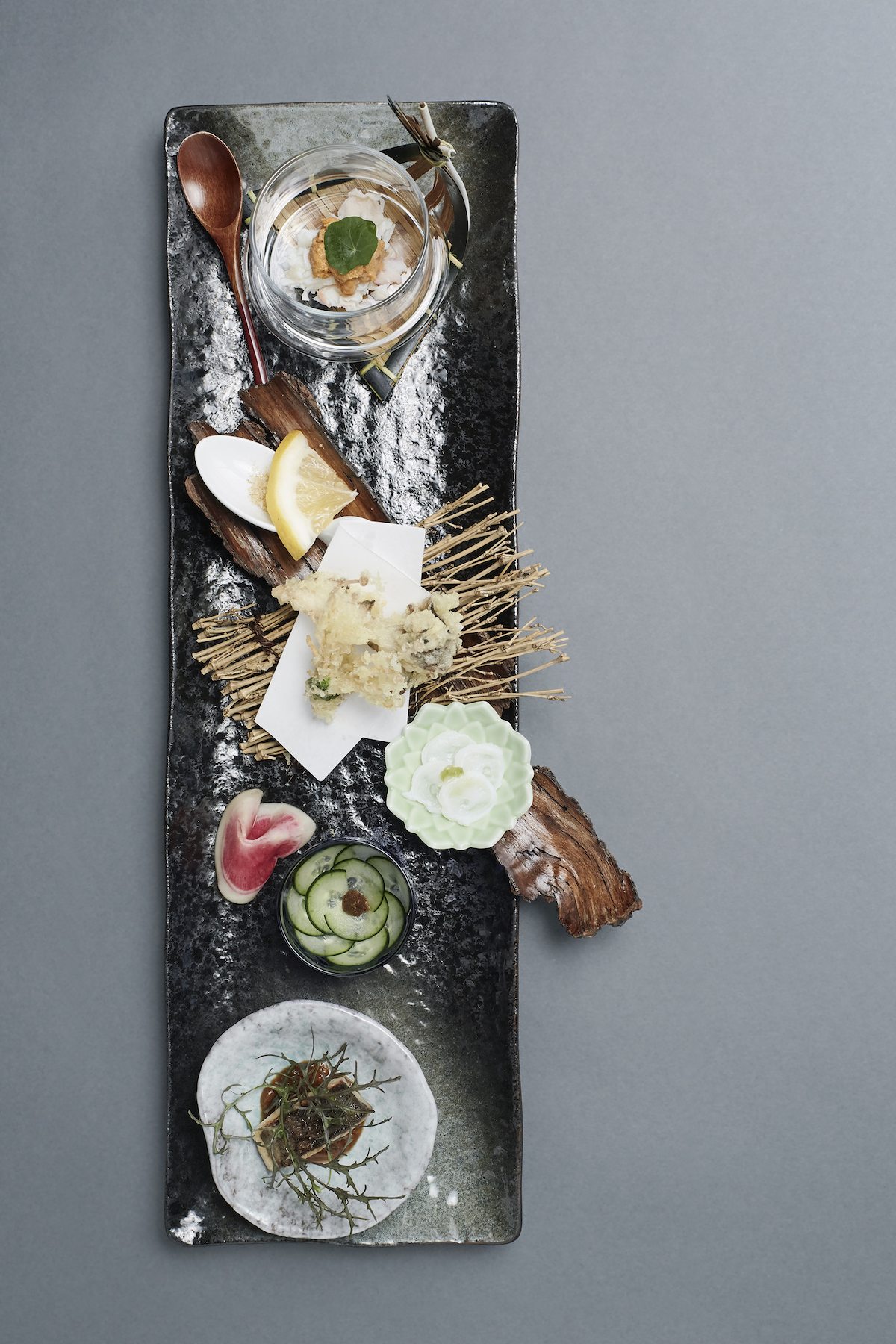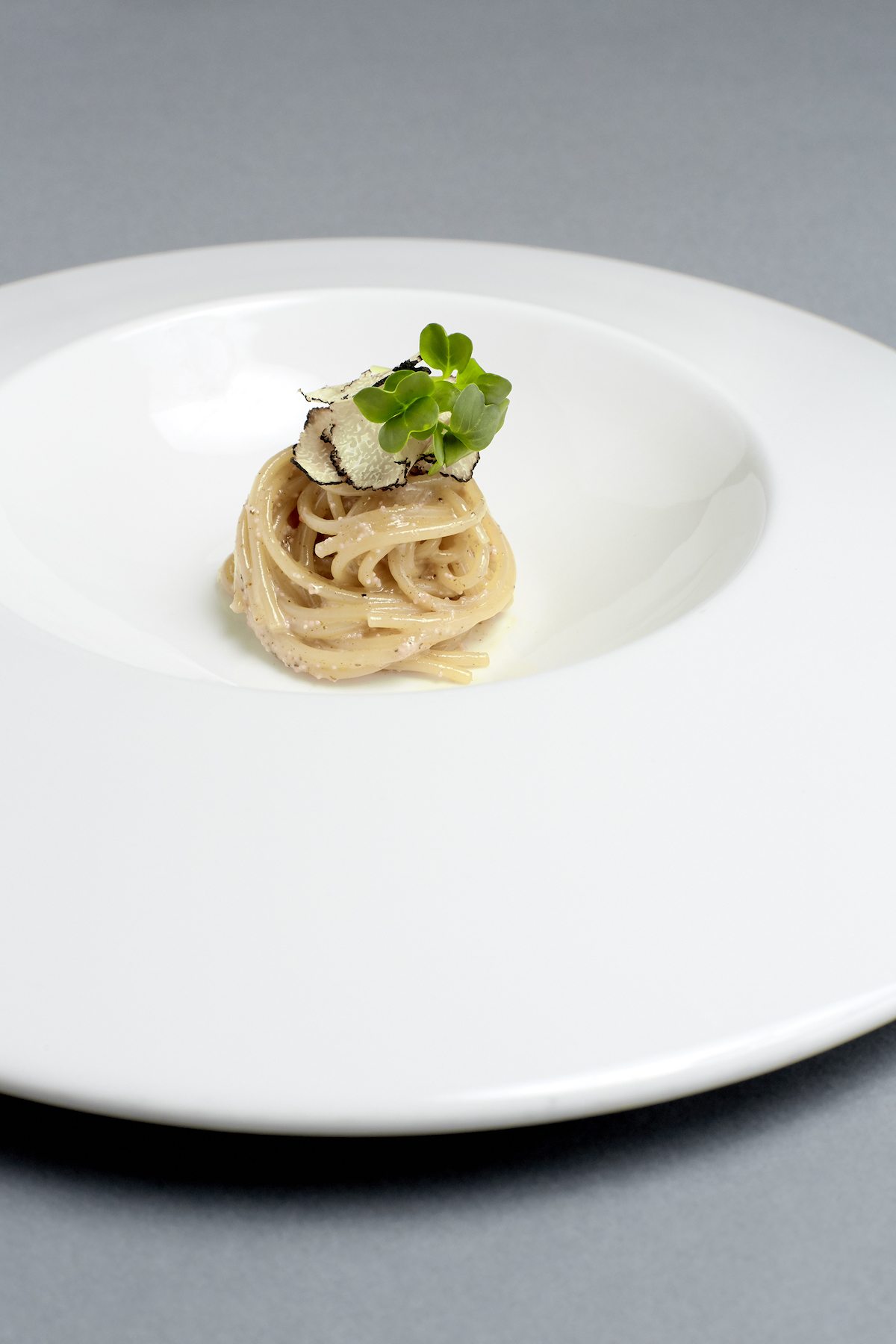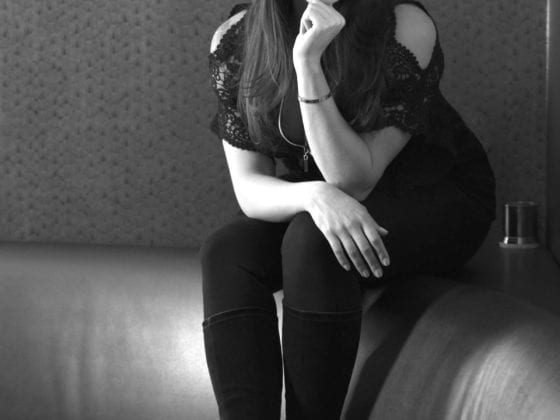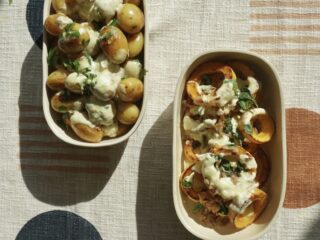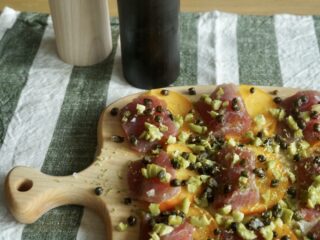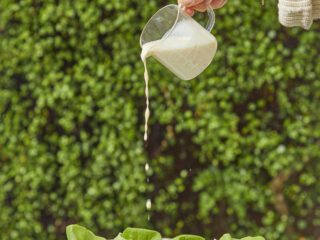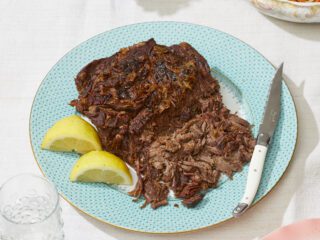There’s a certain symphony of culture and connection only food can convey, and a certain mastery of this that few display so artfully and graciously as Chef Niki Nakayama of n/naka.
Niki is keen to note that she hasn’t arrived at this place in her career all on her own. Her leadership and artistry in the kitchen are brought together by an acute sense of what traditions, ingredients and eating have to offer as an exploration of shared experience.
Fitting as we enter a month that recognizes female history makers, below is a portion of our conversation with Niki last summer in Darling Issue 20. Enjoy.
Niki Nakayama: The Honorable Feast
Interview with Niki Nakayama by Teresa Miller Archer
Many of us fell in love with Chef Niki Nakayama watching the first season of “Chef’s Table,” where her style of cooking Kaiseki, the Japanese art of presenting a multiple course meal, had us mesmerized with her detail, abundance and other-worldly presentation skills.
Yet, the more we investigated inside and around Chef Nakayama and her eponymous restaurant n/naka of Culver City, California (a Zagat “Top 50” pick for Los Angeles in 2016), we found that each dish reflected not only her art and excellence but her values as well. Sustainability, seasonal awareness and a love for her diners keep Chef Nakayama on her toes.
She is famous for having kept a written record of every dish and diner to come into her space and for receiving many accolades, including being included in Food & Wine’s “20 Most Innovative Women” list.
Despite her progressive style, packed into the tiny and nimble frame of this accomplished and celebrated chef and restaurateur is the past, present and future cultures that she so cherishes and celebrates.
Everything about her food and her way of life shouts honor, and we can’t say enough good things about that.
TA: So, tell me a little bit about Kaiseki, where it comes from and what you love about it, and why you wanted it to be the main focus.
NN: Well, Kaiseki originated with tea ceremony and initially consisted of one soup, one rice and three dishes, but in time, it evolved into something like two different ways of doing Kaiseki. Even the writing of it in Japanese is different, where it has the same pronunciation but different writing.
One is like “a stone to the chest” and the other one is “a banquet of seats,” and it evolved into where it became an elaborate banquet type of dinner. Samurais enjoyed it when they finished a battle, and it became very celebratory.
What I love about Kaiseki, either type, is that it is so much about gratitude. It’s about being grateful to something. In the case of cooking, that is being grateful to nature and ingredients, about showing appreciation to all the things that surround you, about what nature can give you and showing respect back.
I love eating like that, and I was like, “One day I’m going to make a restaurant that serves food in that kind of manner, and it’s going to be something.” It’s just always been there in the back of my mind.
What I love about Kaiseki, either type, is that it is so much about gratitude.
TA: Your Kaiseki is a little bit different. What’s that balance for you between honoring the very traditional and then bringing in your own, more local flavor?
NN: Right. I think I ended up justifying this by when I really, really thought about Kaiseki, and it’s really about honoring where you’re at.
The inclination was to reach out to Japan and bring in a lot of the ingredients from Japan, but as time wore on I thought, “I’m just trying to be Kaiseki by bringing Japanese ingredients, but it’s not really Kaiseki,” if I really wanted to be philosophical about it. So I thought, what best way to represent being in California when at the heart of it is that we’re supposed to appreciate nature and make sure that whatever we do with the ingredient, the ingredient never gets lost.
I could take all of those ideas, maintain them, keep them in their most traditional sense, but that doesn’t mean that I can’t add other flavors to be more representative of what it means to be in California. So, that’s how I justify what I do.
TA: And what are some of your favorite ingredients from California that you have incorporated?
NN: I think I would definitely have to say the local black cod is incredible, because up until discovering a local fisherman that is from Japan, who is able to perform the techniques of Japanese ikejime, which is when you catch the fish, you sort of like hit the spine and bleed it out right away, and then you preserve that fish for sashimi. And I think that is one of the most amazing things
I’ve discovered because there is all these great local fish [that], if handled properly, can be served as sashimi and sushi, that you wouldn’t usually get in Japan, so that makes it really exciting because we are getting really great fish; it’s super fresh, it doesn’t have to travel miles and miles to get here, and the product is amazing.
TA: When you’re making decisions on your menu or cooking during service, what responsibility do you feel toward your guests?
NN: These days it’s so easy to access great ingredients all the time, and there’s so much abundance in all the things that people want to eat. Yet, things like the liver, the kidneys and all these things…with my grandparents, it was just natural to eat things like that because that’s all that was available, which isn’t true anymore.
I think it is part of the chef’s duty to reintroduce those things to people. Every time I cook, I think about the guests eating this ingredient for the first time. We think of cutting sushi in ways that it’s not too big; it’s not going to offend them when they put it in their mouth. I’m always telling our staff in the kitchen, “When you cut this, you have to think about maybe this is the first time they’ve ever eaten it, and if you serve it to them in a way that’s off-putting, they’ll never want to try it again.”
So, if we take that into consideration while we’re cooking, even these ingredients that may not seem appealing, if we can present them in an appealing way so that it’s, “Oh I didn’t think that I would ever enjoy that, but it was actually enjoyable,” then we’ve succeeded in the work that we’re trying to do.
Every time I cook, I think about the guests eating this ingredient for the first time.
TA: What do you love about Californian culture?
NN: I always say that our restaurant could not exist in Japan. It just cannot. Japanese people pride themselves on structure and ideas like, “Don’t be too creative; don’t go outside the lines,” you know – “Perfect the skillset that is within the lines, and spend your whole life perfecting the skillset but don’t ever question it and try to go outside of it.”
There’s a lot of that especially in cooking, so, I mean, people might think that what I’m doing to Kaiseki is not traditional enough, and I am happy that they think that way because I don’t feel like I’m traditional enough.
This restaurant thrives because of the diversity in LA, and I think it’s wonderful. I think that I’m in the luckiest place on Earth to open this restaurant.
TA: I’m interested in your food being so precise. What do you think is the balance between being a perfectionist and being creative and how do those two meet one another?
NN: That’s a good question because we were saying how sometimes when you go eat a very nice meal, that’s very technically precise and wonderful, that sometimes it can lose a little bit of soul – that in the search for precision and technical perfection there’s, you can’t help but feel like there’s, a little bit loss of that soul and creative process.
I would always choose the creative versus the precision. I think that when we’re cooking, we always have to, for a lack of better word, listen to the ingredients.
We could be cutting the same loin of fish, and throughout the whole fish, there’s a different fat in every single part of it, because when you cut the equal sizing for it, that thick part with all that fat is going to become too much, versus the other part. You always have to bend to the ingredient, and I think that’s the best way to cook.
You always have to bend to the ingredient, and I think that’s the best way to cook.
TA: If you could thank or highlight anyone who you feel is under appreciated or hasn’t had the exposure they deserve, who would that be?
NN: I know this is so not fair, and so biased, but I would definitely spotlight Carole, my partner, because even though I originally started this restaurant by myself, she since joined in a year after we opened, and I feel like she’s made so many contributions to making the dining experience so much better, whereas I, sometimes, am like, “Oh, it’s okay, let’s just move forward,” she’s like, “No, we’ve gotta go and do it perfectly and make sure that it’s, you know, it’s done the way we originally intended and don’t skip steps.”
Having reached my current level of success is definitely not something that I could have done just by myself, and I think for a lot of successful people, there’s always somebody next to them or a host of people supporting them to make it happen, and then, having to acknowledge that Carole is that for me as well as our team here.
TA: Is there anything else that you wanted to talk about, that you wanted to highlight about things that you’re passionate about or your food or Kaiseki?
NN: I think the most important message that I wanted to get out, I did that; I wanted to really have people understand that we’re not about trying to be traditional Japan. It doesn’t make sense when you walk into a restaurant in America that makes you feel like you are in another country, trying to be another thing.
You have to go to that country to really experience it for what it is really supposed to be. It’s nice to be reminiscent or have an idea, but it’s always nice to remember.
You should never go for something like it; you should go for the real thing.
Like this? Find the full interview in Darling Issue 20. Become a Darling subscriber HERE to immediately gain access to all of our digital versions, plus get our latest issue delivered right to your doorstep.
Images via Frank Terry for Darling Issue 20

